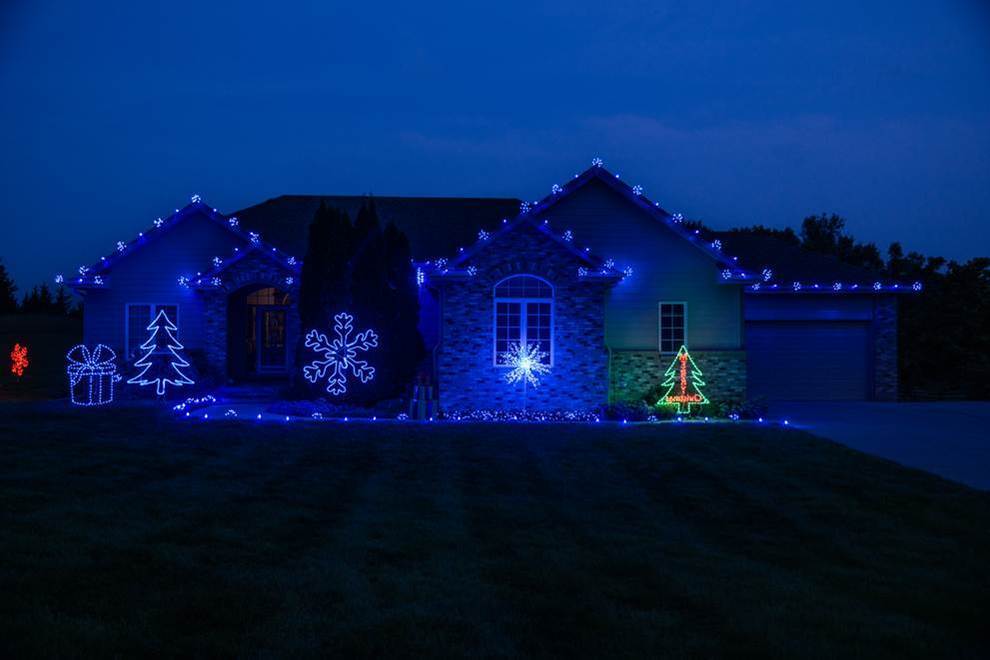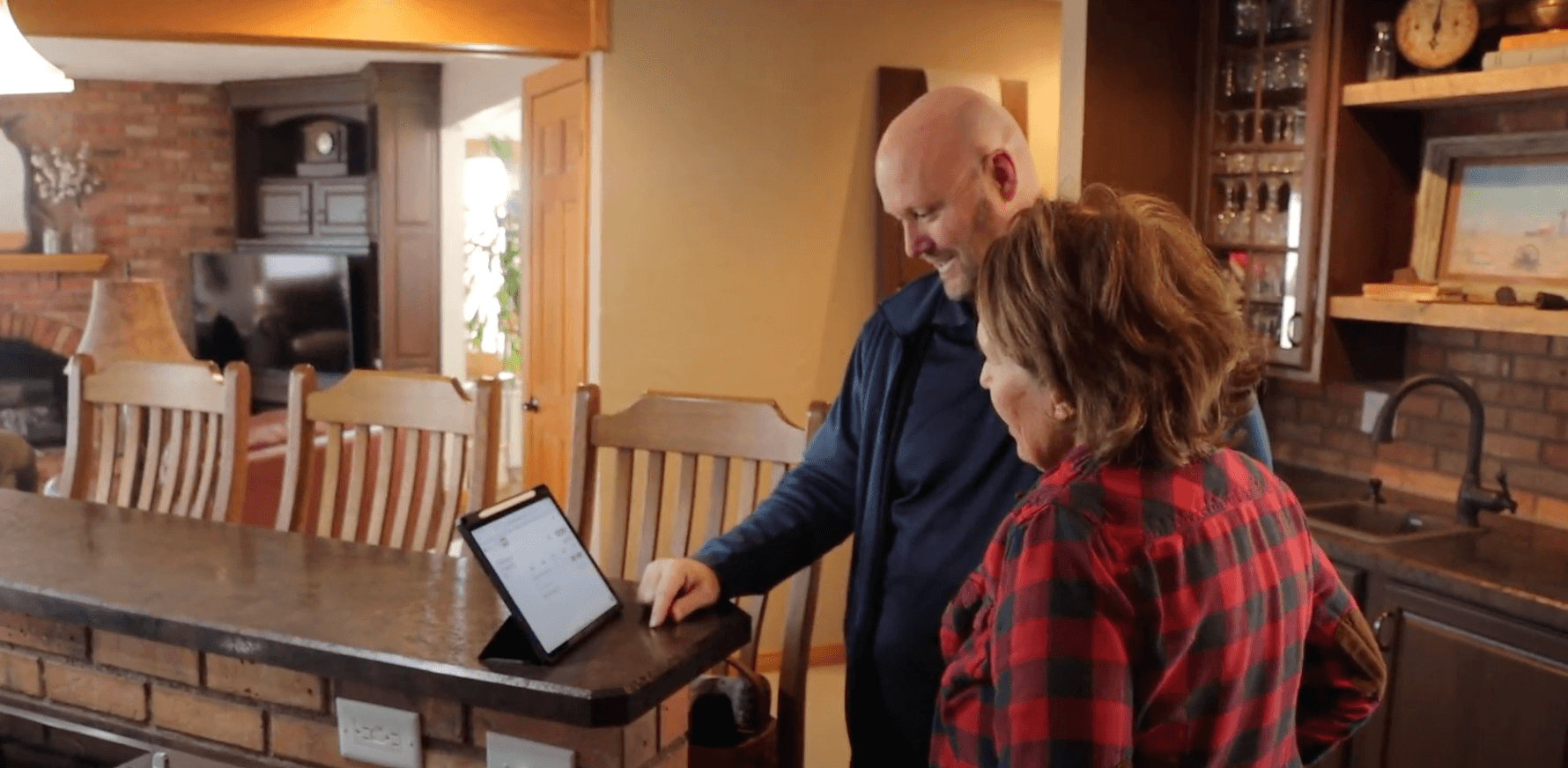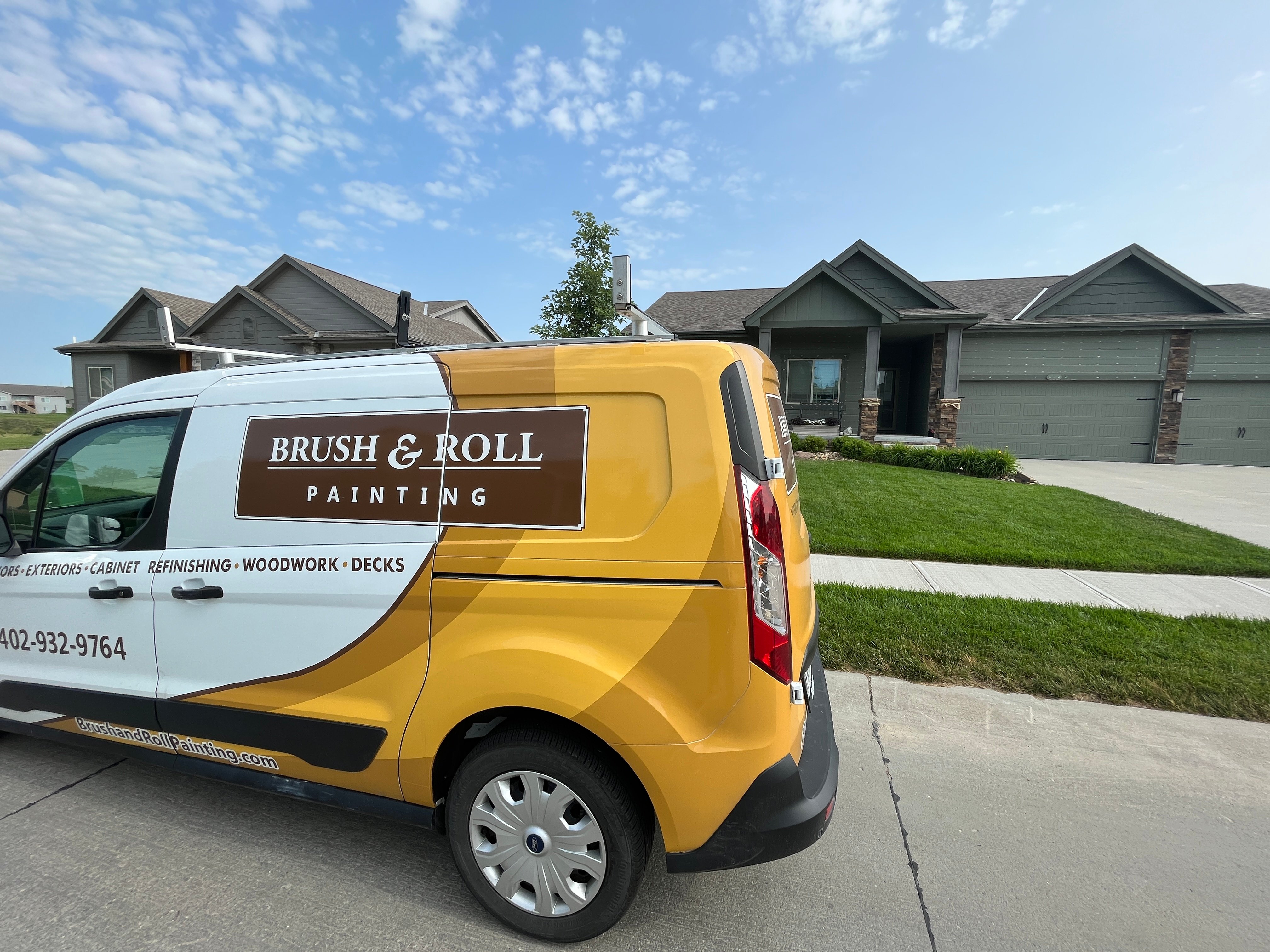Can You Use Interior Wall Paint on Cabinets?
August 13th, 2025
5 min read

You’re staring at your cabinets and wondering if it’s time for a refresh. Maybe they’re outdated or showing wear, and you're thinking, “Why not just paint them myself?” A quick trip to the hardware store and some leftover wall paint sounds like a simple solution. But then you pause. Cabinets get a lot more wear than walls. Will the paint hold up? Is it the same type of product? And if not, what’s the difference?
At Brush & Roll Painting, we’ve helped Omaha homeowners with cabinet painting since 1996. We’ve seen first-hand what happens when the wrong type of paint is used, especially on high-touch surfaces like cabinets. We’ve also seen how the right products and prep work can completely transform a kitchen or bathroom, without the cost of full replacement. Whether you hire us or not for cabinet painting, we want you to make a confident, informed decision.
By the end of this article, you’ll understand exactly how interior wall paint compares to cabinet paint. We’ll walk through the differences in durability, finish, and product composition. You’ll learn why wall paint isn’t made to hold up on cabinets, what can go wrong when it’s used incorrectly, and what your better options are—even if you’re trying to keep costs low. Let’s break it down in a way that’s clear and easy to follow.
What Makes Wall Paint Different from Cabinet Paint?
Paint is paint, right? Not quite. While all paints are designed to cover surfaces and add color, the formulas are made for very different environments.
Interior Wall Paint Is Designed for Low-Touch Areas
Walls aren’t meant to be touched constantly. Most people don’t rub their hands on their living room walls or wipe them down daily. Because of this, wall paint is formulated to:
- Cover large areas quickly
- Have a soft, forgiving finish that hides flaws
- Be cost-effective for large spaces
- Provide moderate durability for the occasional scuff or mark
Wall paints often come in a range of finishes, from flat to semi-gloss. While some higher-gloss options are slightly more washable, they still aren’t built for the heavy wear that cabinets endure.
Cabinet Paint Is Made for High-Touch Surfaces
Cabinet doors, drawers, and frames are opened, closed, bumped, cleaned, and touched hundreds of times a week. This kind of use requires paint that:
- Cures to a harder, more durable finish
- Can resist chips, peeling, and scratches
- Withstands cleaning products, grease, and hand oils
- Stays smooth even with repeated contact
Cabinet paint needs a strong chemical structure to handle that kind of punishment.
.png?width=623&height=350&name=Homepage%20Image%20(1).png)
What Happens If You Use Wall Paint on Cabinets?
We get this question often from Omaha homeowners trying to make smart budget choices. “I already have leftover wall paint. Can I use it on my cabinets?” Here’s what typically happens when people go that route:
- It Chips and Peels Quickly
Interior wall paint just isn’t hard enough for constant handling, like open and closing doors and drawers. Even with a few coats and a sealer, it tends to chip within a few months, especially around handles and corners. Drawers may stick and start to flake where they rub against the cabinet frame. - It Stains and Absorbs Oils
Kitchen cabinets are exposed to a lot: cooking grease, fingerprints, and even steam from boiling water. Wall paint tends to soak in oils and stains instead of resisting them. You might end up with dingy cabinets that are tough to clean. - The Finish Feels Soft
Wall paint is slow to cure, and on cabinets, this often leads to a sticky or tacky finish. Doors may feel rubbery for weeks, or even months, after being painted. Worse, things like dust or hair can stick to them as they dry. - Repainting May Be Needed Sooner
Even if the color looks nice at first, using the wrong product can shorten the life of your project. Many people who try this route end up needing a repaint or refinish within a year or two.
Types of Paint Made for Cabinets
If the wall paint isn’t right, what should you use? There are a few categories of paint or coating products designed specifically for cabinetry.
- Alkyd Enamel (Oil-Modified Water-Based)
Some hardware stores sell waterborne alkyd paints that mimic the hardness of traditional oil-based paints but with easier cleanup. These are more durable than wall paint and can work well for light-use cabinets if applied correctly. - Acrylic Cabinet Paints
Some companies offer cabinet-specific acrylic products, which include additives for better adhesion and hardness. These are often better than wall paint, but they still may not hold up as well long-term, especially in busy kitchens. - 2K Polyurethane Coatings
This is what we use at Brush & Roll Painting: a two-component system called Milesi 2K Polyurethane. It’s not sold in hardware stores. It chemically cures into an extremely hard, smooth finish. This kind of coating:
- Resists chemicals, moisture, and heavy wear
- Stays beautiful for years
- Doesn’t gum up or feel soft over time
- Holds up under the conditions Omaha kitchens actually experience
Milesi is a high-performance finish used professionally. It’s can be beyond what most DIYers can access or apply, but it’s worth knowing about when comparing professional services.

Should You Use Wall Paint on Cabinets?
Here’s the straight answer: No, wall paint is not a good choice for cabinets.
Even if it seems like a good budget decision, the problems it causes tend to outweigh the initial savings. You might spend more time sanding, recoating, and fixing peeling paint than if you had used the right product in the first place.
But what if you’re painting bathroom cabinets or a laundry room on a tight budget? In lower-traffic areas, some homeowners have used mid-grade cabinet paints from the hardware store with okay results, especially if they prep well and apply a durable clear coat. It’s not the most durable solution, but it can work temporarily if expectations are managed.
If you're not sure what you need, ask these questions:
- How much traffic and handling do these cabinets get?
- Will they be exposed to steam, heat, or grease?
- Do you want the finish to last five years or ten?
- Do you plan to sell your home soon, or are you upgrading for the long haul?
Cabinet Painting Prep Work
Whether you use high-end coatings or not, surface preparation makes or breaks a cabinet project. Here’s what real prep involves:
- Degreasing/cleaning every surface thoroughly
- Sanding to remove gloss and help the product adhere to the wood
- Applying a resurfacer product
- Applying a 1-2 coats of a bonding primer
- Lightly sanding between coats
- Using proper drying and curing time before reinstalling doors
Skipping any of these steps, or using the wrong product over greasy cabinets, leads to quick failure, even with expensive paint.

Interior Wall Paint vs Cabinet Paint
|
Feature |
Interior Wall Paint on Cabinets |
Cabinet Paint (Milesi 2K Polyurethane) |
|
Durability |
Low |
Very high |
|
Scratch Resistance |
Poor |
Excellent |
|
Moisture Resistance |
Moderate |
High |
|
Finish Hardness |
Soft |
Hard, chemical-cured |
|
Cleaning Tolerance |
Limited |
Excellent |
|
Application Method |
Brush and roller |
Sprayed in a controlled setup |
|
Cost |
Lower |
Higher upfront, longer-lasting |
Cabinet Painting in Omaha, NE
If you've made it this far, you already know that while it might be tempting, interior wall paint simply isn’t built to hold up on cabinets. The differences are more than just the label on the can. They affect how long your project lasts, how it looks, and how much maintenance it needs.
Cabinets are one of the most-touched surfaces in your home. Using the right paint, along with proper prep, can help them stay beautiful and functional for years. Whether you go with a DIY cabinet paint or professional-grade 2K polyurethane like Milesi, what matters most is using the right product for the job.
At Brush & Roll Painting, we’ve helped Omaha homeowners make these decisions for nearly three decades. If you’re ready to talk about a cabinet painting project, click the button below to get a quote.
Not quite ready yet? Click the button below to explore our cabinet painting pricing calculator to see your options. It’s a helpful way to get a sense of what your project might cost before taking the next step.
Kaylea is the Brush & Roll Painting Content Manager. Kaylea is a Journalism and Media Communications summa cum laude graduate with a minor in Marketing from the University of Nebraska at Omaha. Kaylea manages the marketing for Brush & Roll Painting.



















-Jul-23-2025-02-21-33-5468-PM.png?width=800&height=418&name=Blog%20Post%20Image%20Size%20(2)-Jul-23-2025-02-21-33-5468-PM.png)




-Oct-22-2025-01-39-19-5208-PM.png?width=800&height=418&name=Blog%20Post%20Image%20Size%20(1)-Oct-22-2025-01-39-19-5208-PM.png)


